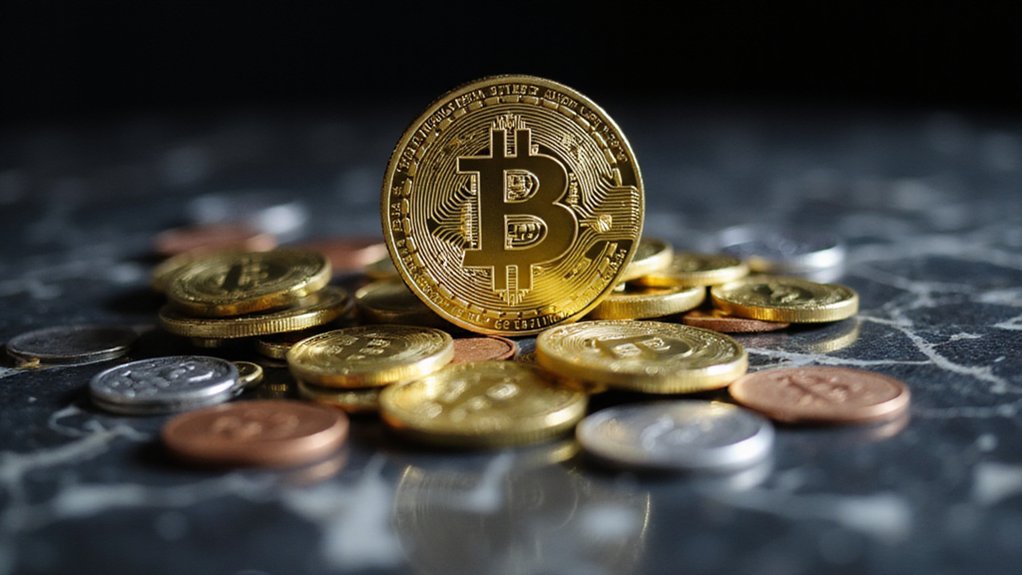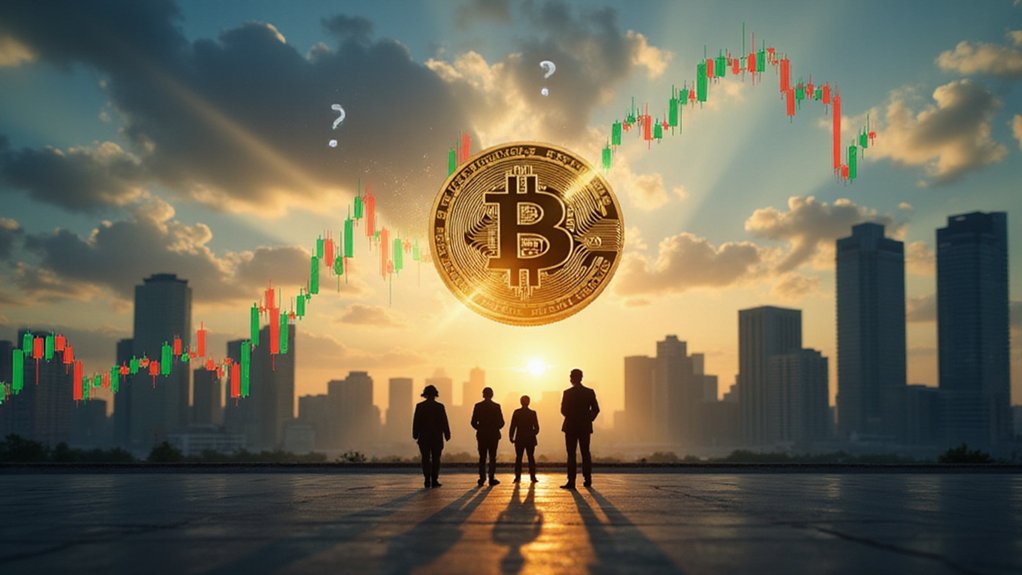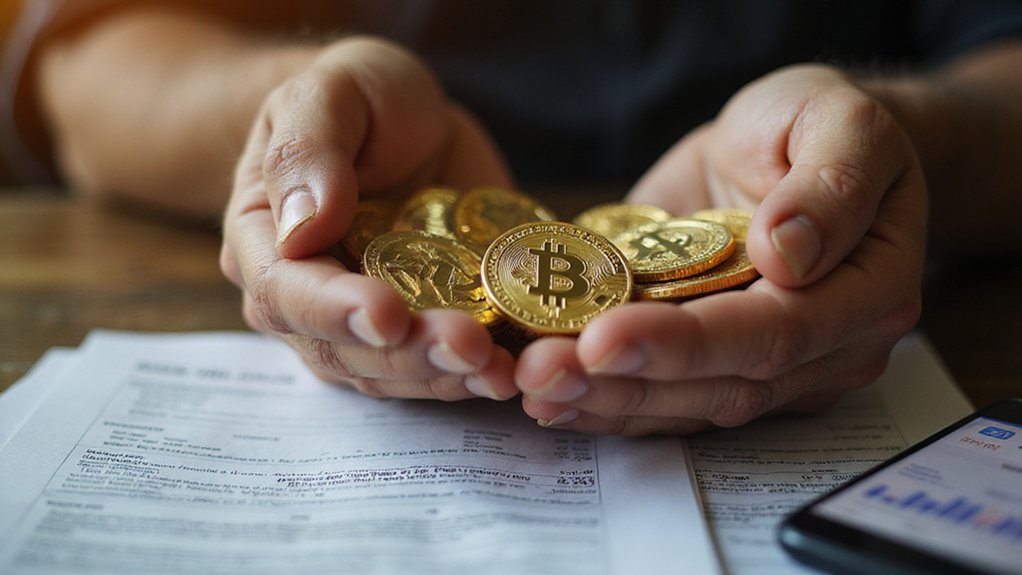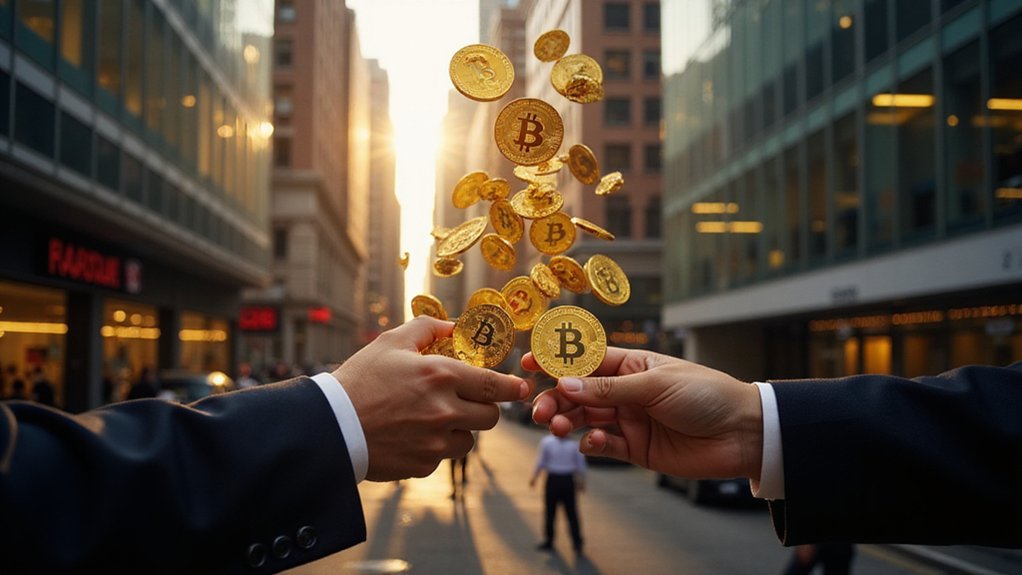As Bitcoin’s dominance surges to a four-year pinnacle of 64.85%, the cryptocurrency landscape has witnessed a familiar yet striking phenomenon: altcoins retreating en masse while investors flock to digital gold’s perceived safety.
This dramatic shift reflects a fundamental recalibration of risk tolerance amid mounting economic uncertainty, where macroeconomic turbulence has investors abandoning speculative ventures for the relative sanctuary of the original cryptocurrency.
The monthly RSI for Bitcoin has breached 72.02, highlighting an almost singular market focus that leaves altcoins gasping for liquidity like fish in a rapidly evaporating pond.
Yet beneath this surface dominance, technical indicators whisper of potential reversal—bearish divergence patterns suggest Bitcoin’s stranglehold may be loosening, even as panicked retail investors continue their exodus from alternative digital assets.
Economic turmoil has crystallized Bitcoin’s safe-haven narrative with remarkable clarity, though one might wonder how a volatile digital asset achieved such status.
Nevertheless, macroeconomic instability and policy uncertainties have reinforced investor confidence in Bitcoin over its more experimental cousins, creating a stark bifurcation in the cryptocurrency ecosystem.
However, altcoin advocates shouldn’t despair entirely.
Ethereum Layer 2 networks demonstrate impressive technical progress, with transaction speeds exceeding 500 TPS—infrastructure developments that historically precede meaningful market reversals.
The expansion of DeFi and GameFi protocols continues building foundational utility, while stablecoin liquidity remains robust enough to fuel potential recoveries. Despite current market conditions, Ripple has demonstrated remarkable resilience across multiple crypto cycles, maintaining investor confidence through regulatory challenges and technical infrastructure improvements.
Market veterans recognize these patterns: altcoin seasons typically emerge when Bitcoin dominance falls below 54%, requiring a decline from current levels to the key weekly closing threshold of 63.45%. Bitcoin dominance faces critical resistance at the 0.618 Fibonacci retracement level, which often acts as a ceiling for corrective rallies before substantial reversals occur. Bitcoin’s impressive market capitalization of over $1.7 trillion underscores its commanding position in the digital asset ecosystem, further amplifying its gravitational pull on investor sentiment.
The alt season index hovers tantalizingly close to the key 50 benchmark, suggesting this dominance cycle may be approaching its natural conclusion.
The current sentiment divergence among retail investors—with extreme bearish positioning on altcoins—often signals contrarian opportunities for those willing to position ahead of the crowd.
Historical precedent suggests altcoin seasons, while brief (typically one to three months), can deliver explosive returns once Bitcoin’s gravitational pull weakens and liquidity flows toward previously abandoned digital assets.
The question remains whether current infrastructure progress and technical developments will catalyze the next rotation.









